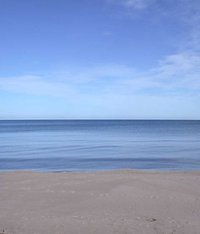Lake Superior
|
|
Lake Superior is the largest of North America's Great Lakes. It is the largest freshwater lake in the world by surface area with Lake Baikal in Siberia having more volume. (The Caspian Sea is larger, but contains salt water.) Lake Superior has a surface area of 82,000 km² (32,000 sq. mi.), larger than the Czech Republic. It has a maximum length of 350 mi (563 km) and maximum width of 160 mi (257 km). Its average depth is 489 ft (149 m) with a maximum depth of 1,333 ft (406 m). Lake Superior contains 2,935 cubic mi (12,232 cubic km) of water. The shoreline of the lake stretches 2,730 miles (4393 km) (including islands).
It borders Ontario in Canada, and Minnesota, Wisconsin and Michigan in the United States of America. It is an important shipment route for iron ore and is part of the Great Lakes Waterway.

The lake is fed by over 200 rivers. The largest include the Nipigon River, the St Louis River, the Pigeon River, the Pic River, the White River, the Michipicoten River and the Kaministiquia River. Lake Superior drains into Lake Huron by the St. Marys River. The rapids on the river necessitate the Sault locks (pronounced "soo"), a part of the Great Lakes Waterway, to move boats over the 25 foot height difference from Lake Huron.
Water levels, including diversions of water from the Hudson Bay watershed, are governed by the International Lake Superior Board of Control which was established in 1914 by the International Joint Commission.
Important towns on Lake Superior include the twin ports of Duluth, Minnesota and Superior, Wisconsin, Thunder Bay, Ontario, Marquette, Michigan, Sault Ste. Marie, Ontario, and Sault Ste. Marie, Michigan.
Among the scenic places on the lake are the Apostle Islands National Lakeshore, Isle Royale National Park, Pukaskwa National Park, Grand Island National Recreation Area, and Pictured Rocks National Lakeshore.
The lake is called "Gitche Gumee" ("big water") in the language of the Ojibwe who have inhabited the area for over five hundred years. The lake was named Lac Supérieur by French explorers because it was the highest in elevation of all the Great Lakes. The land surrounding the lake in Ontario, Minnesota, Wisconsin and Michigan has proved to be rich for mining. Commercial concerns have mined copper, iron, silver, gold and nickel. Many towns are either current or former mining areas, or engaged in processing or shipment. The sparsely populated Lake Superior country with its rugged shorelines and wilderness attract tourists and adventurers, making tourism a large modern industry.
The largest island in Lake Superior is Isle Royale.
The Anishinabe were primarily located around the Great Lakes region.
According to an old sailor's tale, Lake Superior never gives up her dead. This is because the lake is much colder and deeper than most other bodies of water. Bodies tend to sink and (unlike the ocean) never surface again.
The last major shipwreck on Lake Superior was that of the SS Edmund Fitzgerald in 1975.
External links
- International Lake Superior Board of Control (http://www.ijc.org/conseil_board/superior_lake/en/superior_home_accueil.htm)
| North American Great Lakes |
| Lake Superior | Lake Michigan | Lake Huron | Lake Erie | Lake Ontario |
de:Oberer See et:Ülemjärv fr:Lac Supérieur he:ימת סופיריור la:Lacus Superior nl:Bovenmeer id:Danau Superior ja:スペリオル湖 pl:Jezioro Górne sk:Horné jazero fi:Yläjärvi sv:Övre sjön

